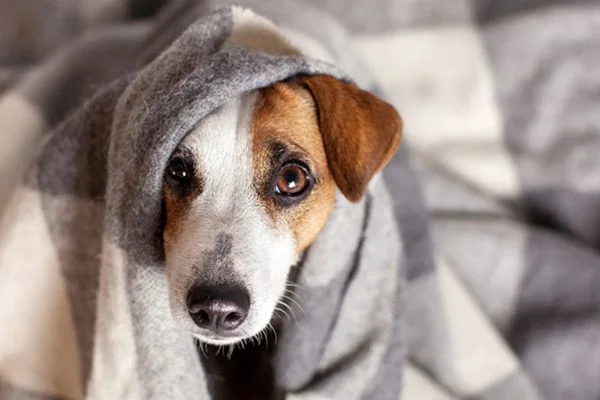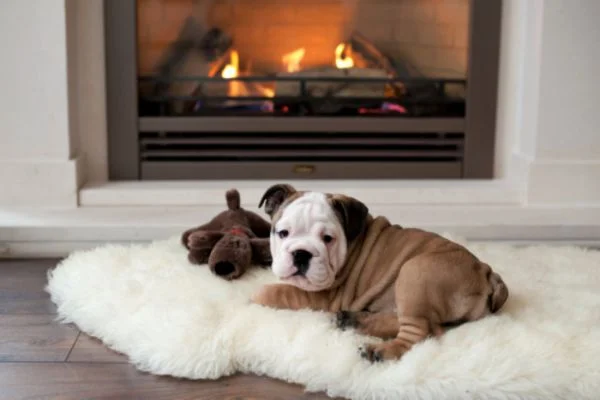If you’re a pet owner, you know how important it is to provide your dog with the best care possible. But when the weather outside starts colder, many dog owners wonder if their furry friends can get cold inside the house. Read on to learn do dogs get cold in the house and why it’s important to ensure your pup doesn’t get too chilly indoors.
Dogs can get cold in the house, especially in cold weather or if they have short fur. Providing warmth and cozy bedding helps them stay comfortable.
Do Dogs Get Cold In The House?
The short answer is yes! Dogs have fur coats, but that doesn’t mean they don’t feel the cold. While some breeds, such as Huskies and Malamutes, were bred to handle colder climates, most dogs don’t fare well in extreme temperatures—cold or hot.
Some dogs may even suffer from cold-related illnesses such as hypothermia if left outside for too long in very cold weather. So although your pup may look like he can take it all in stride when out and about on a winter day, he can still feel the chill indoors.
Also Read: How To Keep Dogs Separated In Same House?
How Can I Tell if My Dog Is Too Cold?

It’s important to be aware of when your furry family member might be feeling a chill. The signs that your dog is too cold may not always be obvious—or they could go unnoticed if you’re not paying close attention.
If you notice any of the following signs, it’s time to take action and make sure he or she stays warm:
• Shivering is perhaps the most obvious sign that a dog needs more warmth. Dogs often use shivering as an involuntary response to generate their heat, but when shivering happens for prolonged periods, this can indicate low body temperature (hypothermia).
1. Whining or Barking Unnecessarily: Dogs may cry out unnecessarily when cold because it can help draw attention from humans, who will provide them with warmth.
2. Resisting Activity or Refusing to Move: If your pup normally loves activity (like running around and playing in the park) but suddenly is reluctant to move, they are likely cold and should get into a warmer environment immediately.
3. Wrapping up in Blankets/Seeking Out Warm Spaces: Some dogs are naturally kind-of “snuggle bugs,” – but if you see them actively seeking out blankets or other warm areas inside the home, this could mean that temperatures outside have gotten too chilly for them.
4. Low Energy/Lethargy: A chill combined with extreme mental exhaustion can leave your canine friend feeling particularly lazy– so pay extra attention on those especially brisk days!
When determining whether your pup needs more heat – think about how long he/she has been outdoors; consider how thick their fur coat is; assess what temperature it is outside; ask yourself whether that temp is comfortable enough for you (as humans, we share many similarities with our animal counterparts); and adjust clothing accordingly if needed—maybe even add an extra layer! And don’t forget about little extras like booties and coats, which can help keep pups comfy even on colder days!
Also Read: How To Heat A Dog House Without Electricity?
What To Do If My Dog Feel Cold
If your beloved furry friend is feeling cold, there are a few steps you can take to make sure that they stay safe and comfortable. Here are some tips on how to keep your dog warm:
1. Provide extra warmth with a blanket or coat. Ensure the blanket isn’t too thick and is made of breathable cotton or fleece to avoid overheating. If you live in an area with harsh temperatures during winter, consider getting your pup a coat specifically designed for colder weather – this will provide additional protection from the cold while keeping them looking stylish!
2. Add extra insulation by moving their bed or crate closer to heat sources like radiators if possible (but make sure it’s not too close that it could be dangerous). You can also place blankets over their beds and pick up pet-safe heating pads meant to provide warmth directly beneath them as additional insulation during especially chilly nights.
3. Regular exercise sessions throughout the day will help keep your pup’s body temperature healthy even when the outside temperature drops below freezing. While walking outdoors in the extreme cold may not always be ideal for everyone involved, playing indoor games like fetch and tug-of-war should do the trick!
4. Adjust their diet accordingly – feeding them slightly more than usual when temperatures decrease helps increase metabolism, which keeps their core body temperature higher and makes them feel warmer overall; however, it’s important to watch out for signs of overheating, so they don’t gain any unhealthy weight due to seasonal changes in appetite levels alone!
Also, consider switching up what kinds of food they’re eating – high-fat diets promote more energy production within their bodies, so adding foods rich in fats, such as salmon oil supplements or deer meat, into their daily meals could help combat those Winter blues.
5 Lastly, offer lots of love & cuddles – snuggling up with your furbaby helps generate natural warmth through physical contact that works wonders both emotionally & physically – plus, who doesn’t want an excuse for more cuddle time?? 🙂 Hopefully, these tips have helped keep your pet warm and secure through these colder months ahead!
Also Read: Should My Dog Kennel Have A Floor In It?
Bottom Line:
So now you know do dogs get cold in the house. Keeping your canine companion comfortable and warm should be a priority for all pet owners! While it might not be as simple as throwing on an extra sweater for us humans when we get chilly indoors, there are plenty of ways to ensure your pup stays snug and happy no matter what time of year it is.
Blankets can help keep them warm while providing comfort during nap time; heated beds are also an option for especially cold weather.
Having their designated spot near any heat sources (such as fireplaces) will help them stay nice and toasty throughout the season. If you remain aware of how Fido reacts to temperature changes inside your home, he’ll always stay happy and healthy!



